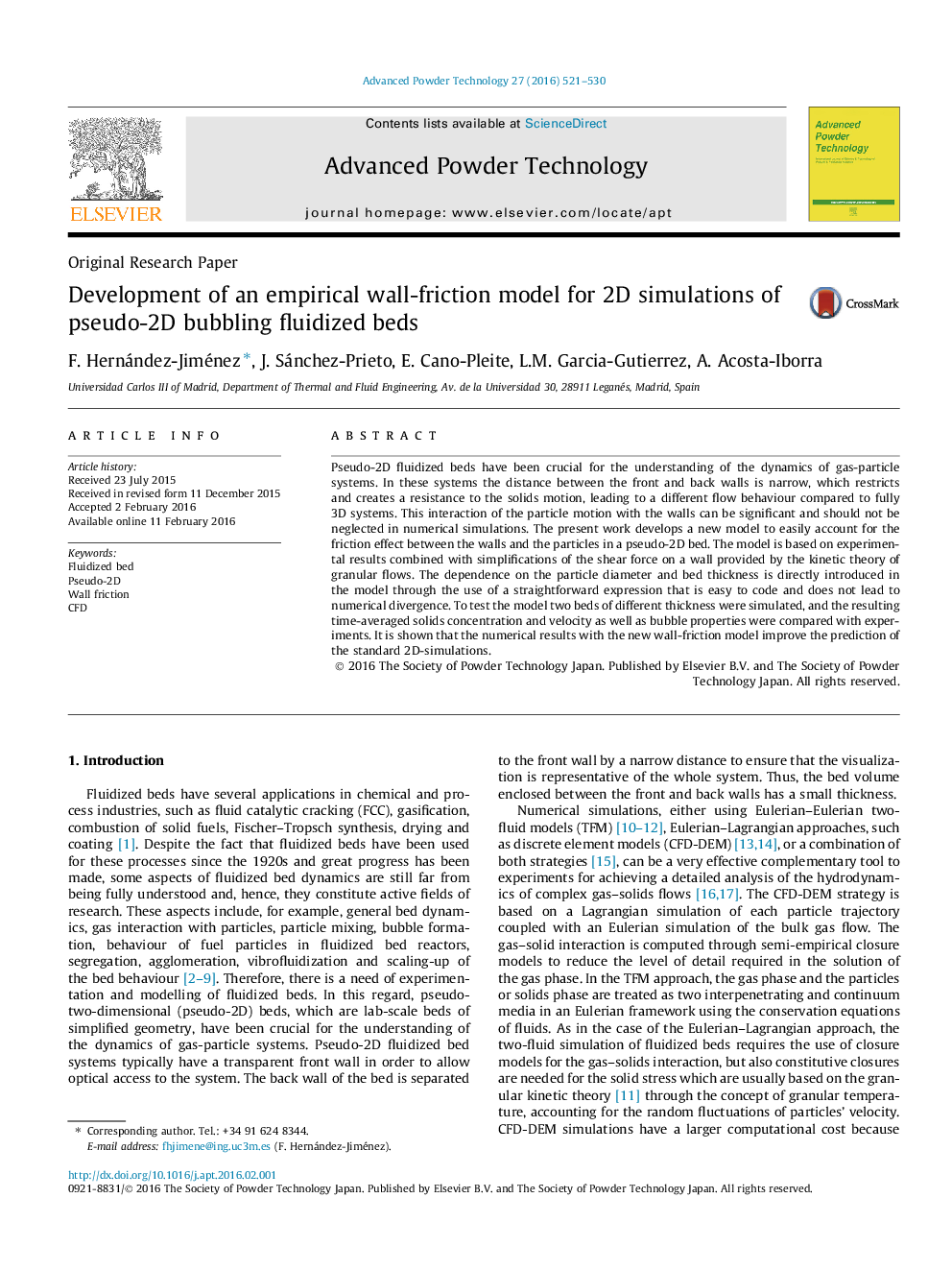| Article ID | Journal | Published Year | Pages | File Type |
|---|---|---|---|---|
| 144126 | Advanced Powder Technology | 2016 | 10 Pages |
•A new wall-friction model is developed for 2D simulations of pseudo-2D beds.•The wall-friction accounts for the front and back walls drag on the solids motion.•The model combines experimental evidence and simplifications of KTGF.•Simulation results are validated with two different experimental pseudo-2D beds.•The use of the proposed wall-friction model improves standard 2D simulations.
Pseudo-2D fluidized beds have been crucial for the understanding of the dynamics of gas-particle systems. In these systems the distance between the front and back walls is narrow, which restricts and creates a resistance to the solids motion, leading to a different flow behaviour compared to fully 3D systems. This interaction of the particle motion with the walls can be significant and should not be neglected in numerical simulations. The present work develops a new model to easily account for the friction effect between the walls and the particles in a pseudo-2D bed. The model is based on experimental results combined with simplifications of the shear force on a wall provided by the kinetic theory of granular flows. The dependence on the particle diameter and bed thickness is directly introduced in the model through the use of a straightforward expression that is easy to code and does not lead to numerical divergence. To test the model two beds of different thickness were simulated, and the resulting time-averaged solids concentration and velocity as well as bubble properties were compared with experiments. It is shown that the numerical results with the new wall-friction model improve the prediction of the standard 2D-simulations.
Graphical abstractFigure optionsDownload full-size imageDownload as PowerPoint slide
